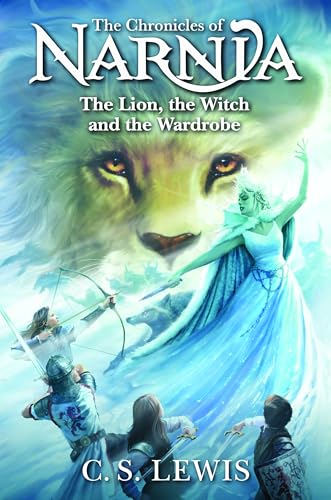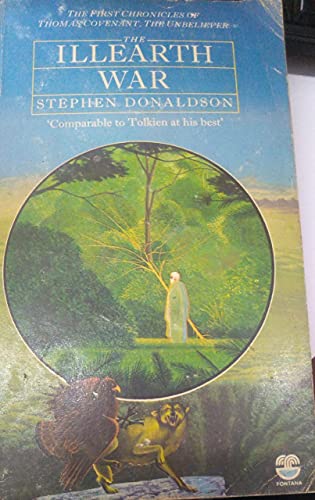Summary
During World War II, four siblings – Peter, Susan, Edmund and Lucy Pevensie – are evacuated from London to the countryside home of Professor Digory Kirke. While exploring the house, Lucy discovers a magical wardrobe that serves as a portal to the enchanted world of Narnia. In Narnia, she befriends a faun named Mr Tumnus, who confesses his initial intention to betray her to the tyrannical White Witch but ultimately helps her return safely.
Lucy’s siblings initially disbelieve her tales of Narnia, but Edmund soon follows her through the wardrobe. He encounters the White Witch, who tempts him with Turkish Delight and promises of power. Edmund, seduced by these offerings, agrees to bring his siblings to her. When all four children eventually enter Narnia together, they learn that the White Witch has arrested Mr Tumnus for treason.
The children are aided by Mr and Mrs Beaver, who tell them of a prophecy: the White Witch’s reign will end when two Sons of Adam and two Daughters of Eve sit on the four thrones of Cair Paravel. They also learn of Aslan, the true ruler of Narnia – a great lion who has been absent for years but is now returning.
Edmund betrays his siblings by going to the White Witch’s castle, where he discovers a courtyard filled with creatures turned to stone. Meanwhile, the other children and the Beavers journey to meet Aslan at the Stone Table. Along the way, they encounter Father Christmas, who gives them magical gifts.
The White Witch demands Edmund’s life, citing the “deep magic from the dawn of time”. Aslan secretly bargains with the Witch, offering his own life in exchange for Edmund’s. Aslan is sacrificed on the Stone Table, but he is resurrected due to “deeper magic from before the dawn of time”, which states that an innocent victim who willingly gives their life will return to life.
Aslan leads the children and the Narnian army in a battle against the White Witch’s forces. With Aslan’s help, the Narnians emerge victorious, and the Witch is defeated. The Pevensie children are crowned kings and queens of Narnia and rule for many years before accidentally returning to their own world, where they find that no time has passed.
Key themes:
- Good vs Evil
- Sacrifice and redemption
- The power of faith and belief
- Coming of age and personal growth
- The importance of family and loyalty
- The consequences of betrayal
- The nature of leadership and responsibility
Character Details
Lucy Pevensie
Lucy is the youngest of the Pevensie siblings and the first to discover Narnia. She embodies innocence, faith and unwavering belief. Despite her young age, Lucy demonstrates remarkable courage and compassion throughout their adventures. Her pure heart and ability to see the good in others make her a crucial character in the story. Lucy’s friendship with Mr Tumnus and her deep connection with Aslan highlight her trusting nature and spiritual intuition. In Narnia, she is crowned Queen Lucy the Valiant, a title that reflects her bravery and steadfast character.
Edmund Pevensie
Edmund, the second-youngest Pevensie, begins as the story’s antagonist among the siblings. Initially portrayed as spiteful and selfish, Edmund’s character arc is one of the most significant in the book. His betrayal of his siblings, motivated by the White Witch’s temptations, leads to dire consequences. However, Edmund’s subsequent remorse, redemption and bravery in battle showcase his growth and transformation. His experiences teach him valuable lessons about loyalty, honesty and the consequences of one’s actions. By the end of the story, Edmund is crowned King Edmund the Just, reflecting his newfound wisdom and fairness.
Peter Pevensie
As the eldest Pevensie sibling, Peter assumes a leadership role throughout their adventures in Narnia. He embodies bravery, responsibility, and protective instincts towards his siblings. Peter’s character develops from a cautious older brother to a confident and capable leader. His prowess in battle, particularly in his confrontation with the Wolf, marks a significant turning point in his journey. Peter’s coronation as High King Peter the Magnificent recognises his natural leadership abilities and his growth into a wise and just ruler.
Susan Pevensie
Susan, the second-oldest Pevensie, is characterised by her practicality, gentleness and maternal instincts. Initially sceptical of Lucy’s claims about Narnia, Susan eventually embraces the magical world and her role within it. She excels in archery and often acts as a voice of reason among her siblings. Susan’s nurturing nature is evident in her care for Aslan after his sacrifice. Her coronation as Queen Susan the Gentle reflects her kind-hearted and compassionate character.
Aslan
Aslan, the majestic lion, is the true king of Narnia and a central figure in the story. He embodies wisdom, power, and sacrificial love. Aslan’s character is both fierce and gentle, inspiring awe and comfort in those around him. His willingness to sacrifice himself for Edmund demonstrates the depth of his love and the power of redemption. Aslan’s resurrection and ultimate victory over the White Witch symbolise the triumph of good over evil. His guidance and protection of the Pevensie children throughout their journey make him a pivotal character in their growth and the salvation of Narnia.
The White Witch
The White Witch, also known as Jadis, is the primary antagonist of the story. She has usurped power in Narnia, plunging the land into an eternal winter. The Witch embodies cruelty, deception, and the corrupting nature of power. Her ability to turn creatures to stone and her manipulation of Edmund showcase her malevolent nature. The White Witch’s claim to Edmund’s life based on “deep magic” and her subsequent defeat by Aslan highlight the themes of justice and the ultimate triumph of good over evil.
Mr Tumnus
Mr Tumnus is a faun and the first Narnian character Lucy encounters. Initially tasked with kidnapping humans for the White Witch, Tumnus’s friendship with Lucy leads him to defy the Witch’s orders. His internal conflict and ultimate decision to help Lucy demonstrate the themes of conscience and moral courage. Tumnus’s arrest by the White Witch serves as a catalyst for the Pevensie children’s deeper involvement in Narnia’s fate. His character represents the oppressed Narnians and the hope for liberation from the Witch’s tyranny.
Reader Fit
“The Lion, the Witch and the Wardrobe” is a captivating read for both children and adults alike.
Young readers will be enchanted by the magical world of Narnia and the exciting adventures of the Pevensie children. The book’s themes of courage, loyalty and the battle between good and evil resonate with readers of all ages.
Adults may appreciate the deeper allegorical elements and the exploration of moral and spiritual themes. The book’s rich symbolism and character development offer layers of meaning that can be revisited and reinterpreted over time.
This novel is particularly well-suited for:
- Fantasy enthusiasts who enjoy immersive world-building
- Readers interested in classic children’s literature
- Those who appreciate stories with strong moral and ethical themes
- Individuals exploring themes of faith, sacrifice, and redemption
- Families looking for a book to read and discuss together
CEFR Classification and Learning Suitability
Estimated CEFR Level: B1 (Intermediate)
The Lion, the Witch and the Wardrobe is a classic children’s fantasy novel with clear and straightforward language, suitable for intermediate learners.
- Vocabulary: The vocabulary is generally simple, with some imaginative and descriptive terms typical of fantasy literature.
- Grammar and Structure: Sentences are mostly simple and compound, with clear and direct narrative flow.
- Themes: The novel explores themes of good versus evil, courage and friendship, presented in an engaging and accessible manner.
- Dialogue and Style: Dialogue is natural and easy to follow, contributing to the story’s magical and adventurous tone.
Recommendation:
This book is ideal for intermediate learners who enjoy classic fantasy with clear storytelling and timeless themes.
Quick Facts
Genre: Children’s Fantasy
Publication Year: 1950
Reading Time Estimate: 4-6 hours
Notable Awards: Lewis Carroll Shelf Award (1962)
Related Books
- “The Magician’s Nephew” by C. S. Lewis (another book in the Chronicles of Narnia series)
- “The Hobbit” by J.R.R. Tolkien
- “A Wrinkle in Time” by Madeleine L’Engle
Buy the Book
Embark on a magical journey through the wardrobe and discover the wonders of Narnia!
“The Lion, the Witch and the Wardrobe” offers a timeless adventure that will captivate your imagination and warm your heart. Whether you’re revisiting this beloved classic or experiencing it for the first time, C. S. Lewis’s masterpiece promises an unforgettable reading experience. Don’t miss the chance to explore this enchanting world – get your copy today and step into Narnia!


